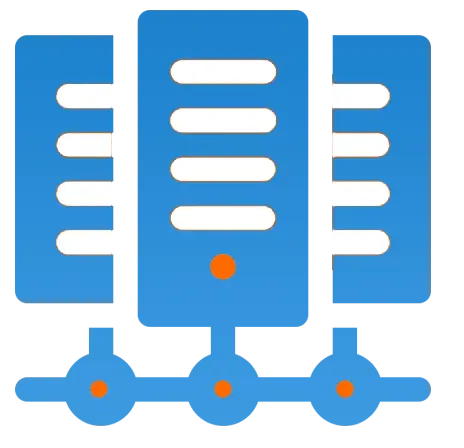Get 69% Off on Cloud Hosting : Claim Your Offer Now!
- Products
-
Compute
Compute
- Predefined TemplatesChoose from a library of predefined templates to deploy virtual machines!
- Custom TemplatesUse Cyfuture Cloud custom templates to create new VMs in a cloud computing environment
- Spot Machines/ Machines on Flex ModelAffordable compute instances suitable for batch jobs and fault-tolerant workloads.
- Shielded ComputingProtect enterprise workloads from threats like remote attacks, privilege escalation, and malicious insiders with Shielded Computing
- GPU CloudGet access to graphics processing units (GPUs) through a Cyfuture cloud infrastructure
- vAppsHost applications and services, or create a test or development environment with Cyfuture Cloud vApps, powered by VMware
- Serverless ComputingNo need to worry about provisioning or managing servers, switch to Serverless Computing with Cyfuture Cloud
- HPCHigh-Performance Computing
- BaremetalBare metal refers to a type of cloud computing service that provides access to dedicated physical servers, rather than virtualized servers.
-
Storage
Storage
- Standard StorageGet access to low-latency access to data and a high level of reliability with Cyfuture Cloud standard storage service
- Nearline StorageStore data at a lower cost without compromising on the level of availability with Nearline
- Coldline StorageStore infrequently used data at low cost with Cyfuture Cloud coldline storage
- Archival StorageStore data in a long-term, durable manner with Cyfuture Cloud archival storage service
-
Database
Database
- MS SQLStore and manage a wide range of applications with Cyfuture Cloud MS SQL
- MariaDBStore and manage data with the cloud with enhanced speed and reliability
- MongoDBNow, store and manage large amounts of data in the cloud with Cyfuture Cloud MongoDB
- Redis CacheStore and retrieve large amounts of data quickly with Cyfuture Cloud Redis Cache
-
Automation
Automation
-
Containers
Containers
- KubernetesNow deploy and manage your applications more efficiently and effectively with the Cyfuture Cloud Kubernetes service
- MicroservicesDesign a cloud application that is multilingual, easily scalable, easy to maintain and deploy, highly available, and minimizes failures using Cyfuture Cloud microservices
-
Operations
Operations
- Real-time Monitoring & Logging ServicesMonitor & track the performance of your applications with real-time monitoring & logging services offered by Cyfuture Cloud
- Infra-maintenance & OptimizationEnsure that your organization is functioning properly with Cyfuture Cloud
- Application Performance ServiceOptimize the performance of your applications over cloud with us
- Database Performance ServiceOptimize the performance of databases over the cloud with us
- Security Managed ServiceProtect your systems and data from security threats with us!
- Back-up As a ServiceStore and manage backups of data in the cloud with Cyfuture Cloud Backup as a Service
- Data Back-up & RestoreStore and manage backups of your data in the cloud with us
- Remote Back-upStore and manage backups in the cloud with remote backup service with Cyfuture Cloud
- Disaster RecoveryStore copies of your data and applications in the cloud and use them to recover in the event of a disaster with the disaster recovery service offered by us
-
Networking
Networking
- Load BalancerEnsure that applications deployed across cloud environments are available, secure, and responsive with an easy, modern approach to load balancing
- Virtual Data CenterNo need to build and maintain a physical data center. It’s time for the virtual data center
- Private LinkPrivate Link is a service offered by Cyfuture Cloud that enables businesses to securely connect their on-premises network to Cyfuture Cloud's network over a private network connection
- Private CircuitGain a high level of security and privacy with private circuits
- VPN GatewaySecurely connect your on-premises network to our network over the internet with VPN Gateway
- CDNGet high availability and performance by distributing the service spatially relative to end users with CDN
-
Media
-
Analytics
Analytics
-
Security
Security
-
Network Firewall
- DNATTranslate destination IP address when connecting from public IP address to a private IP address with DNAT
- SNATWith SNAT, allow traffic from a private network to go to the internet
- WAFProtect your applications from any malicious activity with Cyfuture Cloud WAF service
- DDoSSave your organization from DoSS attacks with Cyfuture Cloud
- IPS/ IDSMonitor and prevent your cloud-based network & infrastructure with IPS/ IDS service by Cyfuture Cloud
- Anti-Virus & Anti-MalwareProtect your cloud-based network & infrastructure with antivirus and antimalware services by Cyfuture Cloud
- Threat EmulationTest the effectiveness of cloud security system with Cyfuture Cloud threat emulation service
- SIEM & SOARMonitor and respond to security threats with SIEM & SOAR services offered by Cyfuture Cloud
- Multi-Factor AuthenticationNow provide an additional layer of security to prevent unauthorized users from accessing your cloud account, even when the password has been stolen!
- SSLSecure data transmission over web browsers with SSL service offered by Cyfuture Cloud
- Threat Detection/ Zero DayThreat detection and zero-day protection are security features that are offered by Cyfuture Cloud as a part of its security offerings
- Vulnerability AssesmentIdentify and analyze vulnerabilities and weaknesses with the Vulnerability Assessment service offered by Cyfuture Cloud
- Penetration TestingIdentify and analyze vulnerabilities and weaknesses with the Penetration Testing service offered by Cyfuture Cloud
- Cloud Key ManagementSecure storage, management, and use of cryptographic keys within a cloud environment with Cloud Key Management
- Cloud Security Posture Management serviceWith Cyfuture Cloud, you get continuous cloud security improvements and adaptations to reduce the chances of successful attacks
- Managed HSMProtect sensitive data and meet regulatory requirements for secure data storage and processing.
- Zero TrustEnsure complete security of network connections and devices over the cloud with Zero Trust Service
- IdentityManage and control access to their network resources and applications for your business with Identity service by Cyfuture Cloud
-
-
Compute
- Solutions
-
Solutions
Solutions
-
 Cloud
Hosting
Cloud
Hosting
-
 VPS
Hosting
VPS
Hosting
-
GPU Cloud
-
 Dedicated
Server
Dedicated
Server
-
 Server
Colocation
Server
Colocation
-
 Backup as a Service
Backup as a Service
-
 CDN
Network
CDN
Network
-
 Window
Cloud Hosting
Window
Cloud Hosting
-
 Linux
Cloud Hosting
Linux
Cloud Hosting
-
Managed Cloud Service
-
Storage as a Service
-
 VMware
Public Cloud
VMware
Public Cloud
-
 Multi-Cloud
Hosting
Multi-Cloud
Hosting
-
 Cloud
Server Hosting
Cloud
Server Hosting
-
 Bare
Metal Server
Bare
Metal Server
-
 Virtual
Machine
Virtual
Machine
-
 Magento
Hosting
Magento
Hosting
-
Remote Backup
-
 DevOps
DevOps
-
 Kubernetes
Kubernetes
-
 Cloud
Storage
Cloud
Storage
-
NVMe Hosting
-
 DR
as s Service
DR
as s Service
-
-
Solutions
- Marketplace
- Pricing
- Resources
- Resources
-
By Product
Use Cases
-
By Industry
- Company
-
Company
Company
-
Company
Serverless Computing: The Next Step in Cloud Infrastructure!
Table of Contents
As a result of its constant upgrades, Cloud Computing has already taken the world by storm. The next step is serverless computing. Read this article and find out what is serverless computing and how does it work!
With the emergence of cloud platforms, it should go without saying that the generation of physical servers is no longer in existence. It has been no secret in the technology world that since the proliferation of containerization, serverless computing has become the hot topic in the world of technology. While there are servers in this cloud architecture, they are abstracted to the point that the developers are relieved of the responsibility of taking care of the operations of the servers, contrary to what the name suggests. There are several reasons for this technology to be misconstrued as it is somewhat of a fad.
- With the advent of IaaS and PaaS, a framework known as Serverless was invented
- Serverless computing was pioneered by Amazon Web Services (AWS) in the market
- A server-side application is dependent on a third-party application or custom code in order to run
It is estimated that the cloud storage market size will grow from USD 23.76 billion in 2016 to USD 74.94 billion by 2021, with a CAGR of 25.8% between 2016 and 2021. – MarketsandMarkets.
Essentially, the logic behind this is that the servers are hidden behind the applications on the front-end and are not visible from the back-end. As a result, the burden of maintaining the servers and their common issues such as scalability, high availability, and other issues that may arise will be reduced. As opposed than monolithic applications, Serverless Computing invokes small pieces of independent code that can be executed as and when necessary as opposed than monolithic applications. Basically, for the serverless computing services to run on the cloud platform, these snippets of code must be triggered by events that make them run, and in turn incur costs based on the time spent operating on the platform.
What is Serverless Computing?
Cloud computing’s serverless model allows developers to build and run applications without provisioning servers or managing backend infrastructure.
With serverless, developers can focus solely on writing the best front-end code and business logic possible. In order to deploy their application code to containers managed by a cloud service provider, developers simply need to write their application code. The cloud provider manages everything else, provisioning the cloud infrastructure needed to run the code and scaling it up and down as needed. Besides operating system updates and patches, cloud providers are also responsible for security management, capacity planning, and system monitoring.
‘Serverless’ does not imply ‘no servers’
Although serverless computing is referred to as serverless, there are definitely servers involved. A ‘serverless’ server is one that is invisible to the developer, who does not see, manage, or interact with it in any way.
Serverless platforms are now offered by all the leading cloud service providers. Microservices, containers, and serverless computing form a triumvirate that is typically considered to be the backbone of cloud-native applications.
How Serverless Computing works?
A Serverless architecture, in its simplest form, is a collection of applications that depend on the functionality of Backend-as-a-Services (BaaS) and Function-as-a-Services (FaaS), which merges the ability of these two models to empower the cloud infrastructure of the company. When clients access the database, FaaS provides an authentication layer through an API, enabling developers to concentrate on client operations without worrying about the backend infrastructure.
Additionally, these codes are ephemeral in nature, meaning that they are decommissioned once they have been executed, so you only pay for the time resources are used instead of spending money on gigantic infrastructures containing multiple physical servers.
Some Key Aspects of Serverless Cloud Computing
| Aspect | Description |
|---|---|
| Infrastructure | Cloud providers manage servers, scaling resources as needed. |
| Event-Driven | Execution triggered by events, like HTTP requests or data changes. |
| Cost Model | Pay only for actual usage, no fixed server costs. |
| Scalability | Automatically scales with demand, ensuring high availability. |
| Development Focus | Developers focus on code and app logic, not server management. |
| Use Cases | Ideal for microservices, data processing, and web applications. |
| Vendor Lock-In | Potential dependency on specific cloud provider services. |
| Cold Starts | Occasional delay when functions are initialized from idle state. |
What are the potential benefits of Serverless Computing?
Among all the high-end technologies, cloud computing has become the new norm, transforming the technology paradigm completely. Based on statistics, Serverless Computing is renaissance is accelerating this transformation. Here are some ways Serverless Computing can help you –
Serverless Computing increases efficiency and throughput of your technology platform by running codes only when needed, rather than running cloud virtual machines ad nauseum 24X7.
Suitable for short-lived, event-driven applications – Serverless Computing is best suited for short-lived, event-driven applications where code runs on the server for a certain period. However, it is often suitable for next-generation corporate app portfolios filled with small, event-triggered snippets rather than monolithic apps.
With its ability to run on the cloud server for a short duration and free the resources afterwards, this next-generation technology saves time and money. In turn, this allows the company to optimize utilization of resources by paying for the time the code has run.
What are the challenges with Serverless Computing?
This technology is not without its flaws, which make companies rethink its use before deploying it despite these sound benefits. What are they?
A monolithic application can be broken down into multiple micro-services, which adds a considerable burden to infrastructure. The management of a single large application is easier than the management of ten smaller applications. Besides increasing workload, this also adds a great deal of complexity.
Serverless Computing becomes problematic when it comes to monitoring and debugging due to the lack of tools available in the market for overcoming these situations. The use of multiple servers instead of one may result in increased latency for the company.
Takeaway
Through the introduction of as-a-Service models, Cloud Computing has redefined technologies to bring agility, scalability, and efficiency at par. There is no doubt that more and more companies small and large will adopt this technology in the very near future as data loads continue to increase, resulting in an extremely digitized world.
Recent Post

Stay Ahead of the Curve.
Join the Cloud Movement, today!
© Cyfuture, All rights reserved.
Send this to a friend

 Pricing
Calculator
Pricing
Calculator
 Power
Power
 Utilities
Utilities VMware
Private Cloud
VMware
Private Cloud VMware
on AWS
VMware
on AWS VMware
on Azure
VMware
on Azure Service
Level Agreement
Service
Level Agreement 


















